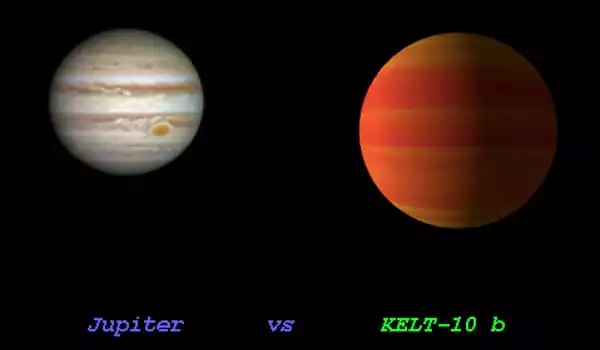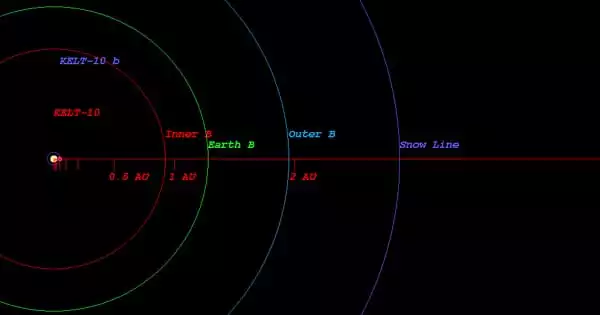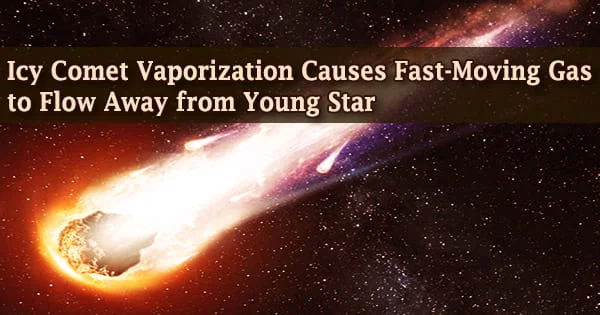KELT-10b is an exoplanet that orbits the G-type main-sequence star KELT-10 in the southern constellation Telescopium. It is a gas giant exoplanet with a mass of 0.679 Jupiters, a period of 4.2 days to complete one orbit of its star, and a distance of 0.0525 AU from its star. It was discovered via the transit approach and announced in 2016.
It is approximately 617.7 light-years (189.4 pc) distant from the Solar System. KELT-10 has an apparent magnitude of 10.8 and an absolute magnitude of 4.4. It is 1.1 times more massive and 1.2 times larger than our Sun. The surface temperature is 5948 degrees Celsius, with G1 spectral types. The extrasolar planet KELT-10 b orbits the star KELT-10 every 4.2 days at an orbital distance of 0.05 AU in this planetary system.

Discovery
KELT-10b was discovered by a team of scientists from the SAAO using the KELT-South telescope. The light curves and system parameters were observed, and it is expected that the planet is bloated due to the host’s activity and evolution status along the HR Diagram. KELT-10b is one of several exoplanets that will be observed by the ESA mission ARIEL.
KELT-10 b is the first transiting exoplanet identified with the Kilodegree Extremely Little Telescope (KELT)-South telescope. KELT-10 b is a highly inflated sub-Jupiter mass planet. This planet joins a group of enormously inflated transiting exoplanets with a substantially bigger radius and mass than Jupiter. The planet has 1.4 percent deep transits.
Properties
KELT-10b has 68 percent the mass of Jupiter but is 40 percent bigger. Due to its mass, the planet is less dense than Jupiter and has an equilibrium temperature of 1,377 K. KELT-10b has a conventional four-day orbit around its host at a distance ten times greater than Mercury, however, it’s unclear if it’s on a circular or elliptical orbit. Observations of the planet with the Very Large Telescope revealed the existence of sodium in the atmosphere.
KELT-10 is a yellow dwarf similar to the Sun, although it is 7% more massive and 19% larger. It is also hotter, with a temperature of 5883 K, compared to the Sun’s 5778 K. The (V) in its spectral class indicates that it belongs to the main sequence. The star is also slightly younger than the Sun, with an age of 4.5 billion years, and brighter, with brightness 40 percent higher. KELT-10 is home to a planet and possesses 23% more heavy metals than the Sun.
















